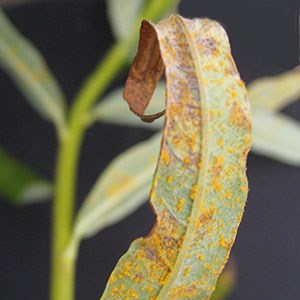Contact
jan.stenlid@slu.se, 018-671807

Trees and pathogens interact at several different levels, ranging from landscape and forests to the molecular level. We study both resistance mechanisms in trees and pathogenicity factors in pathogens.
At the population level we aim at understanding how resistance is maintained in the host and how we as humans can include more resistant trees in future forests. At the molecular level we study induced responses e.g. in signalling pathways and secondary metabolite production. Fungal pathogenicity factors are searched for using state-of-the-art genetics and genomic technology.
An important part of our work is based on genetic analyses such as search for Quantitative Trait Loci (QTL) and association mapping of candidate genes for resistance and pathogenicity. We are also performing whole genome association mapping of the pathogen Heterobasidion annosum. Hypotheses about candidate genes are tested using molecular techniques e.g. gene knock out, knock-down and overexpression.
We collaborate with a number of people both at other departments within SLU but also at other Universities and Institutes. You find some of our current collaborators at the Royal Institute of Technology, University of Helsinki, the Forestry Research Institute of Sweden (Skogforsk), Norwegian Forest and Landscape Institute and at SLU the Department of Plant Biology as well as at the Department of Chemistry and Biotechnology.
jan.stenlid@slu.se, 018-671807